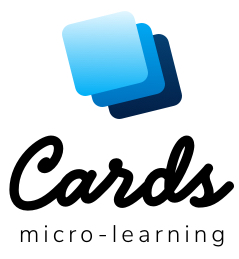Adapting To Modern Learning Needs
By focusing on these strategies, HR can transform the learning experience and ensure employees thrive in today’s dynamic business environment. Want more insights on effective eLearning implementation?
1. Assess Training Needs
First things first, understand what your organization needs. Conducting a thorough needs assessment is crucial in identifying the skills gaps and learning preferences of your employees. This process involves several key methods, each providing unique insights:
- Employee surveys
Surveys are an efficient way to gather quantitative data on employees’ current skill levels and their preferred learning methods. They can be distributed online, allowing for quick and wide-reaching responses. - Focus group discussions
Engaging employees in group discussions can uncover deeper insights into their learning experiences and expectations. These discussions can reveal common challenges and highlight areas where training is most needed. - One-on-one interviews
Personalized interviews with key stakeholders provide detailed feedback on specific training needs and preferences. This method allows for in-depth exploration of individual perspectives and can highlight unique requirements.
By employing these methods, HR can gather comprehensive data that ensures the eLearning program addresses the actual needs of the organization and aligns with its goals.
2. Choose The Right Tools
With numerous eLearning tools on the market, selecting the right one can be challenging. Key criteria to consider are user-friendliness, ensuring the tool is intuitive and easy to navigate for both learners and administrators. Compatibility with your existing Learning Management System (LMS) is crucial to ensure seamless integration. Customization options allow tailoring content and features to your organization’s specific needs. Think of this process as choosing the perfect pizza–you want a tool that offers a balance of features to satisfy everyone’s tastes. With a plethora of eLearning tools available, choosing the right one can feel like finding a needle in a haystack. Key criteria to consider include:
- User-friendliness
Ensure the tool is intuitive and easy to navigate for both learners and administrators. A user-friendly interface encourages engagement and reduces the learning curve. - Compatibility with your existing LMS
Seamless integration with your current Learning Management System is crucial to ensure smooth operations and data consistency. - Customization options
The ability to tailor content and features to your organization’s specific needs is vital. Customizable tools allow you to create a personalized learning experience that resonates with your employees.
3. Implement And Monitor
Once your eLearning program is up and running, it’s crucial to monitor its effectiveness. This involves using analytics to track progress and gather feedback. Regular adjustments ensure continuous improvement. Key steps include:
- Regularly review learner analytics
Analytics provide valuable data on participation, completion rates, and performance metrics. Regular reviews help identify trends and areas for improvement. - Collect feedback through surveys and discussions
Gathering feedback from learners through surveys and informal discussions can provide insights into their experiences and highlight any challenges they face. - Make iterative improvements based on data
Use the data and feedback collected to make continuous adjustments to the program. This iterative process ensures the learning experience remains engaging and effective.
4. Foster A Culture Of Continuous Learning
Encourage a learning culture where employees view training as a growth opportunity rather than a chore. Strategies to achieve this include:
- Celebrating learning milestones
Recognize and reward employees who complete courses or acquire new skills. Celebrations can be as simple as shout-outs in team meetings or more formal recognitions, such as certificates and awards. This recognition fosters motivation and engagement. - Offering incentives for course completions
Provide tangible rewards or recognition to further incentivize participation. Incentives could range from gift cards and bonuses to additional time off or professional development opportunities. - Organizing learning-themed events
Highlight the importance and enjoyment of continuous learning by organizing events focused on Learning and Development. These could include workshops, webinars, or informal learning sessions, promoting a positive attitude towards training and development.
This approach not only enhances employee satisfaction but also drives continuous growth and innovation. By fostering a culture of continuous learning, organizations can ensure their workforce remains adaptable and equipped with the skills needed to thrive in a dynamic business environment. Now, go out there and be the HR rockstar your organization needs!

Cards micro-learning
Transform your team knowledge into short learning nuggets with Cards micro-learning. Cards is the quickest and easyest solution to share your knowledge in no time, online, on MS Teams and on mobile.

